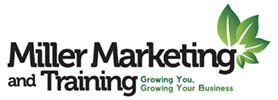Kill ‘Em With The Close
One of my favorite national sales magazines recently published a story about Gateway 2000, a booming computer manufacturing company. In describing its sales force, the Vice President for Major Accounts was quoted as saying, “Our sales organization was almost entirely reactive and just responded to inbound calls… customers had to call us to buy the product as opposed to us generating a relationship.” Red flag! Call or an order-entry department, call it a customer service department, just call it anything but a sales organization.
By definition, a salesperson or a sales department is proactive. A salesperson initiates the relationship with a prospect to determine any needs and finds out how the product provides a solution. This may be the reason I feel so strongly against wasting money on Yellow Pages advertising. Rather than have someone shop me, I’d prefer to go and find an exclusive prospect and open a new relationship.
This reminds me of salespeople who say they can do everything else well but just can’t “close.” Hello-oo! That’s like saying, “I’m a really great pilot, it’s just those landings I have trouble with.” These salespeople’s careers will suffer the same fate as the pilot’s – crash and burn! Or consider the fisherman who knows the secret holes and has the best tackle money can buy, but loses the big catch just before its reeled on the boat.
You may be doing everything else right, but if you don’t know how to ask for the order, you’re in deep waters. The commission on the sale you don’t close will feed you about as well as the fish that almost made it onto the boat.
Ask yourself these questions: “How am I at closing?” “Do I know how to ask for the order?” If this is a sticky spot for you, I’d like to share some of my favorite and time-tested closes.
The Direct-Question Close
You’d be amazed at the number of very professional people who can cold-call prospects and even deliver a great presentation, yet fail to ask for the order. At some point in your presentation, you must ask for a commitment to the ideas you’re proposing. Many sales are lost simply because the salesperson failed to ask. Always offer a direct question after your presentation to get your prospect to take action or sign the contract. Try, “How does that sound to you?” or “Can we install this for you next Friday?”
Or come up with your own direct question that first your style and personality, then make it part of every presentation.
The Alternate-Choice Close
The alternate-choice close could also be used as a direct-question close. It asks your prospect to select between two different options regarding a minor item. One example might be, “Do you think the beige container works well with this carpet, or do you prefer white?” or, “Would you prefer the tropical look of the white Bird of Paradise for your office or the compactness of a corn plant?” Try to avoid asking the client to choose between two days of the week, such as, “Would Tuesday be okay, or does Friday work better for you?” Clients may be turned off by this “choice,” which has been overused by insurance salesmen trying to secure appointments.
My four-year-old daughter, Chelsea, is a master of the alternate-choice close, often asking, “Daddy, should we stop and get ice cream cones or just wait and make our own at home?” getting a client to answer to an alternate-choice question is easier than asking for a commitment to your entire proposal. Plus, the answer assumes you’re moving forward.
The Assumptive Close
While giving your presentation, use the words “when” and “your,” which assume the prospect wants your interiorscape services. Use phrases like, “When you get your plants, you’ll see dramatic improvements in…” Or you can say, “We’ll be here first thing each Tuesday to service your plants.” In either case, you must assume the prospect wants to buy, and end with the assumptive close.
To better understand the effectiveness of this close, consider this story: a man was approached by a leader in his church to teach a large adult Sunday morning Bible study class. In considering the level of commitment, he had some reservations and told the leader he’d think about it, pray and then give him an answer. The next day, as he explains it, he received a letter from the church pastor, thanking him for accepting the assignment and expressing confidence in his abilities. When asked about his decision to teach the class, he responded, “I wasn’t about to say no to the pastor, especially since I really wanted to say yes.”
When closing the sale, use assumptive language, and watch your attitude turn into positive expectation. Instead of thinking about all the reasons why your prospect can’t afford or won’t buy, assume the sale is yours, and act and speak in a spirit of complete confidence.
The Minor-Point Close
By making a minor decision, your prospect is indicating a larger buying decision has been made. Many of the alternate-choice questions prompt your prospect to make minor-point decisions to lead to the acceptance of the entire proposal. Some of the minor points I try to get clients to agree with are:
- Decorative container color
- Specific plant placement
- The project contact person
- The most convenient service day
- The most convenient water source
I may have already gleaned much of this information during my initial visit and walk through, but I address these issues during the presentation to instigate small closes. These minor-point closes help test the water and are sometimes also called trial closes.
The Trial Close
Before asking a direct question at the end, you should use several trial closes during the presentation to test your prospect’s interest level. The following questions can provide you with a good indication of your prospect’s interest level: “How does that sound to you so far?” or “Is this what you had in mind?” If you get lukewarm or even cold responses, you can adjust your presentation in hopes of finding the “hot button.”
The beauty of the trial close is that you can do this adjusting during the presentation, while you’re in control. If you wait until the end to discover your prospect is about as excited as a Tampa Bay Buc’s fan, it’s pretty tough to begin the selling process all over again.
The Contingency Close
How many times have you been super close to closing a sale, just to have your prospect bring up some minor detail that, in his mind, must be reconciled before he can move forward? For example, perhaps he insists on contacting the accounting department or something really silly like helping the vice president decide if his plant goes in the left corner or behind his desk.
Years ago, I would allow these last minute “shenanigans” to totally derail my selling process. I’d walk out of an otherwise great sales call with squat, in other words, a signatureless proposal. These last-minute “concerns” are usually just stalls my dad used to call “straw men.” They look like a big deal until you discover you can easily “blow them down.”
My standard reply to these concerns is, “Why don’t we do this: I’ll just write on the proposal, ‘contingent upon accounting department’s allocation of funds and plant location agreement.’” As I make this suggestion, I sometimes just begin writing whatever contingency is necessary to close the deal. This is usually enough to satisfy the prospect that his concern was valid and properly addressed.
However, remember this unfortunate axiom of our times: “A verbal agreement isn’t worth the paper it’s written on.” If you accept the stall and agree to let the client mail you a signed copy, any number of other “concerns” can arise, which you may bot be able to address.
The Give-Us-A-Try Close
This close works well with a prospect who is more laid back. if your rapport has been good and most of your ideas have gained acceptance, use this question to gently ease into the commitment: “You really seem to like the program and it’s within your budget, so why don’t you give us a try?” Many times, John will answer, “Sure, why not?”
The give-us-a-try close reduces client’s anxiety associated with making a bad buying decision, since they’re just “giving it a try.” And you know if they give you a try, they’ll be hooked.
The How-Far-Apart-Are-We Close
Though it has never happened to me, I have heard salespeople occasionally can’t close the sale because their prospect thinks the price is too high. Imagine! If this has ever happened to you, you’d be surprised how often you and your prospect are actually very close to agreeing on price.
Do you think your prospects exaggerate a bit at times, just for effect? Sure they do, and so should you if you have even the slightest negotiating bone in your body. This is called the “flinch.” After your client hears the price, he flinches and says, “It’s how much?” But don’t let the flinch throw you. Calmly and politely ask your prospect, “Well, Bill, how far apart are we?”
Oftentimes, the gap between the proposed price and what the prospect expects to pay is insignificant. But don’t simply lower your price in response, or you’ll get “nibbled” to death.
Instead, find something to “adjust” in your proposal that will bring the price close to your prospect’s ideal number. For example, suggest, “You know, if we just use a 12 inch instead of a 14 inch plant in these areas, we could go ahead with this today.
Now you know some of my favorite closes. They’ve served me well and helped me close several sales I would have otherwise missed. Again, adjust these to fit your personality and particular selling style. Just make the close an integral part of your presentation, because if you don’t we’ll be scraping you off the tarmac along with that pilot who didn’t know how to land.





